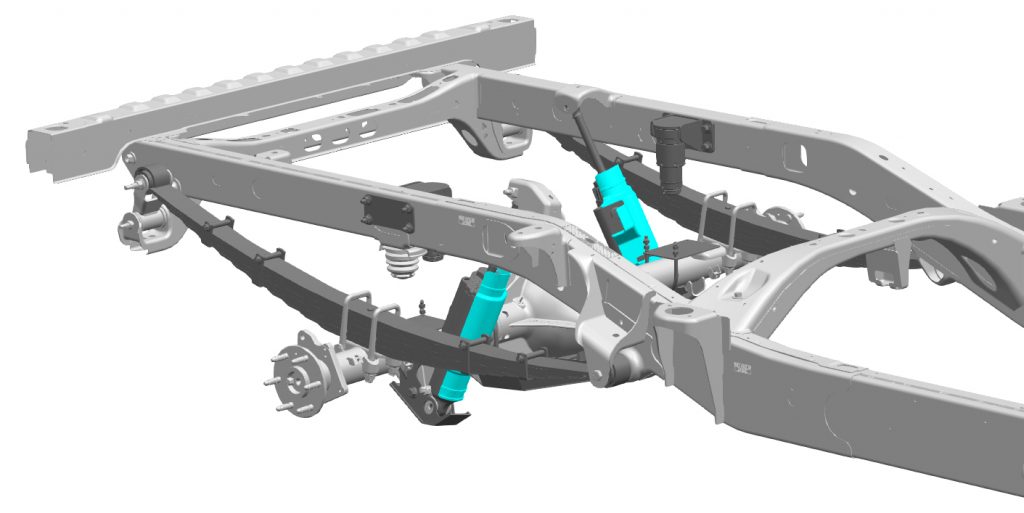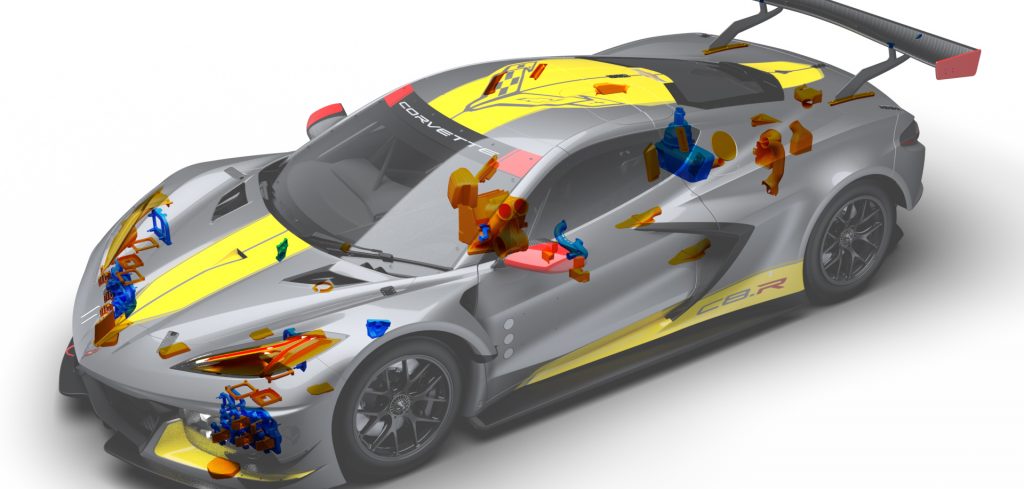According to Chevrolet Motorsport, it has harnessed additive manufacturing (AM) technology extensively on its competition vehicles through 2020, both on- and off-road.
“Chevrolet has a long history of technology transfer between our motorsports and production teams, and this is a perfect example of our approach,” said Jim Campbell, GM US vice president of performance and motorsports. “GM’s 3D-printing capability speeds up our learning cycles and, in turn, these racetrack experiences help our additive manufacturing team move one step closer to using 3D-printed parts in production vehicles.”
For example, the company’s Corvette C8.Rs, which debuted at Rolex 24 at Daytona in January, were each equipped with 75 3D-printed parts – including the oil tank, tank inlet and cap, air conditioning driver cooling box and integrated hydration system, power steering pump bracket and headlight assemblies – and 50 of these parts were designed or printed in-house by GM.
Meanwhile, its IndyCar program has also had great success leveraging 3D printing for engine parts. Components in the V6’s exhaust system are 3D printed, which the team says helps eliminate failure points in traditional manufactured components while increasing design freedom and reducing cost.
Even in the harsh extremes of desert racing, the manufacturer’s Silverado trucks, which compete in the 1200 Stock class – where there are limits to changes to suspension, underbody and installation of race-safety equipment – have benefitted from AM parts. These included a rear damper shield made with carbon-fiber-reinforced plastic, which protects the rear dampers from the rocky desert terrain.
Finally, in NASCAR, Chevrolet’s Camaro ZL1 1LE, which debuted in 2020, has employed a host of 3D-printed parts for test and development. Over 500 3D-printed prototype parts were used in testing to develop the body, and the competition cars feature an AM gear cooling duct, which has accumulated nearly 18,500 miles of competition in 27 races.
“By utilizing 3D-printed parts, Chevrolet Motorsports is demonstrating the many benefits of additive manufacturing, including manufacturing efficiencies, mass reduction, parts consolidation, creativity and cost savings,” highlighted Audley Brown, GM director, materials engineering, additive design and manufacturing. “3D-printed parts can offer equal strength and durability to cast or milled components, which is critical for product development and design.”




